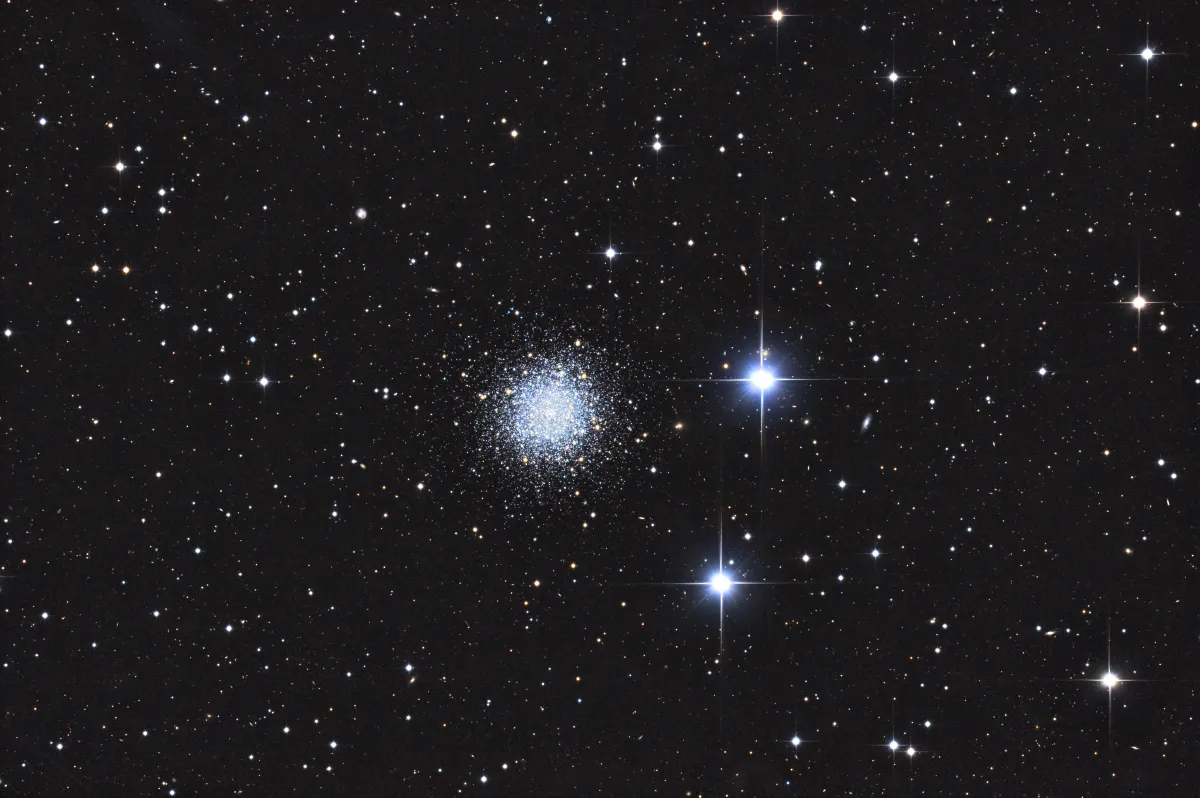Globular Cluster NGC 6229

History
On 12 May 1787 the German-British astronomer William Herschel found an object looking through his 18.7 inch reflecting telescope that he thought was a planetary nebula. He cataloged it as IV 50 and described it as follows: «very bright, round, 4' diameter, almost equally bright, with a faint resolvable margin.» [464] His son John cataloged the object in 1864 as GC 4244. The Swedish astronomer Per Magnus Herman Schultz using the 9.6" Steinheil refractor at Uppsala Observatory was probably the first one who identified the object as globular cluster. Dreyer mentioned hin when he added the object in 1888 as globular cluster with the designation NGC 6229. [277, 313]
Physical Properties
The two foreground stars, which appear to the west of globular cluster NGC 6229 as seen from our perspective, are located at a distance of 63 pc (HD 151651, more northerly) and 90 pc (HD 151689, more southerly). [145] NGC 6229, at a distance of 30.5 kPC, is far out of the Milky Way plane, about four times farther than the two globular clusters Messier 13 and Messier 92 in the same constellation. [148]
| Designation | NGC 6229 |
| Type | GCL (IV) |
| Right Ascension (J2000.0) | 16h 46m 58.9s |
| Declination (J2000.0) | +47° 31' 42" |
| Diameter | 4.5 arcmin |
| Visual magnitude | 9.4 mag |
| Metric Distance | 30.500 kpc |
| Dreyer Description | globular, vB, L, R, disc & F border, r |
| Identification, Remarks | WH IV 50; GC 4244; GCL 47 |
Finder Chart
The globular cluster NGC 6229 is located in the constellation Hercules. The best observation time is from February to November.
Visual Observation
400 mm Aperture: The globular cluster NGC 6229 forms a beautiful sight with its two bright «companion stars». In the 21 mm Ethos eyepiece (85x), single stars are partly visible in the globular cluster. With the 9 mm Nagler eyepiece (200x) more and more fine stars become visible far outside the core of the globular cluster. — 400 mm f/4.5 Taurus Dobsonian, Hasliberg, 18. 8. 2023, SQM 21.2, Bernd Nies
762 mm Aperture: The globular cluster is very well resolvable into its stars in the outer area. Towards the centre, individual brighter stars are still visible. The cluster has a slightly elongated shape and is slightly truncated on one side by a dark round area. — 30" SlipStream-Dobson f/3.3, Hasliberg, 18. 8. 2023, Eduard von Bergen
